The burbling call of a Long-billed Curlew echoed across the dry fields as my dad and I stepped out of the minivan to listen. We stood on a dirt road about 20 miles west of Malta, craning our necks as we squinted at the sky, searching for a tiny dot that might be a Sprague’s Pipit. The unnamed road ran smack-dab through the middle of some of Montana’s best pipit habitat, and after missing several other prairie and marsh specialists at Bowdoin that morning (including Baird’s and Nelson’s Sparrows and Sedge Wren), we had come here for one last-ditch effort.
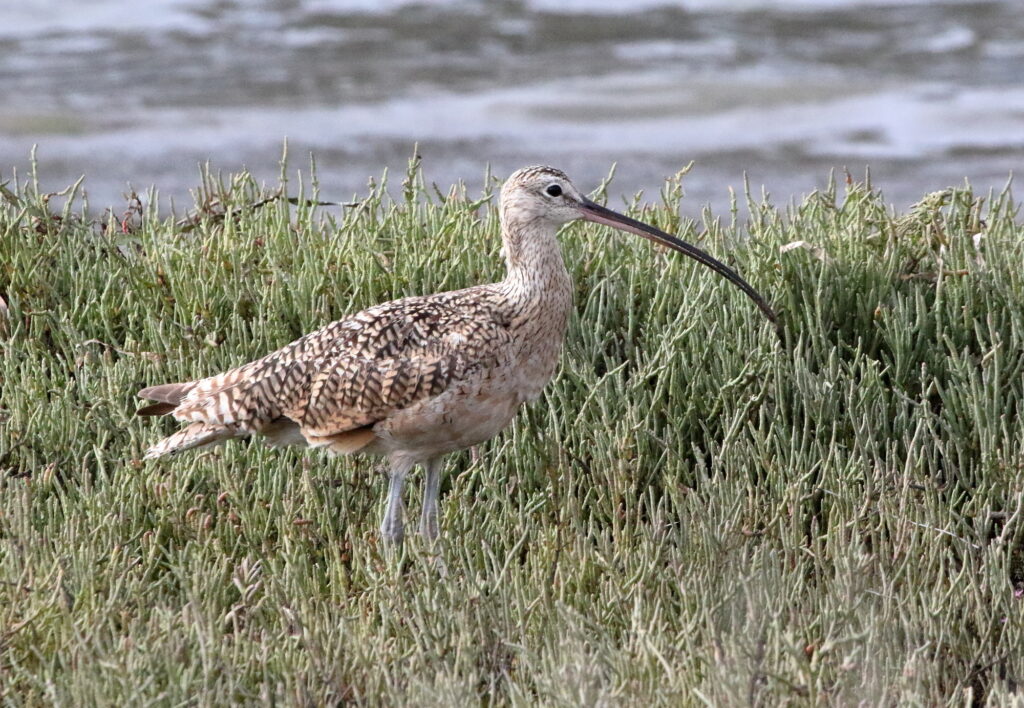
Unfortunately, we had limited pipit experience to draw on. We’d only seen one before, in a thunderstorm on a road-turned-to-gumbo last July. Nick Ramsey had spotted that bird as we had frantically knocked mud off our car wheels, so we’d never even found the species by ourselves—making locating one now seem like a long shot. Thankfully, few clouds loomed on the horizon, meaning we probably wouldn’t have to deal with another thunderstorm.
Our search tactic involved conducting five-minute point counts every half mile, getting out of the car and listening for the birds. This was how most pipits had been detected on this road in the first place, and thanks to the science project I’d worked on last summer, I knew roughly how long to stay at each place before designating it “pipitless” and moving on.
The first couple of points produced good birds, but nothing of exceptional interest. Vesper and Grasshopper Sparrows sang from the tufts of grass along the fence, and a few acrobatic Franklin’s Gulls spun in the sky above us. At places with more dense shrubbery the dry, buzzy trills of Clay-colored Sparrows joined the grassland chorus.
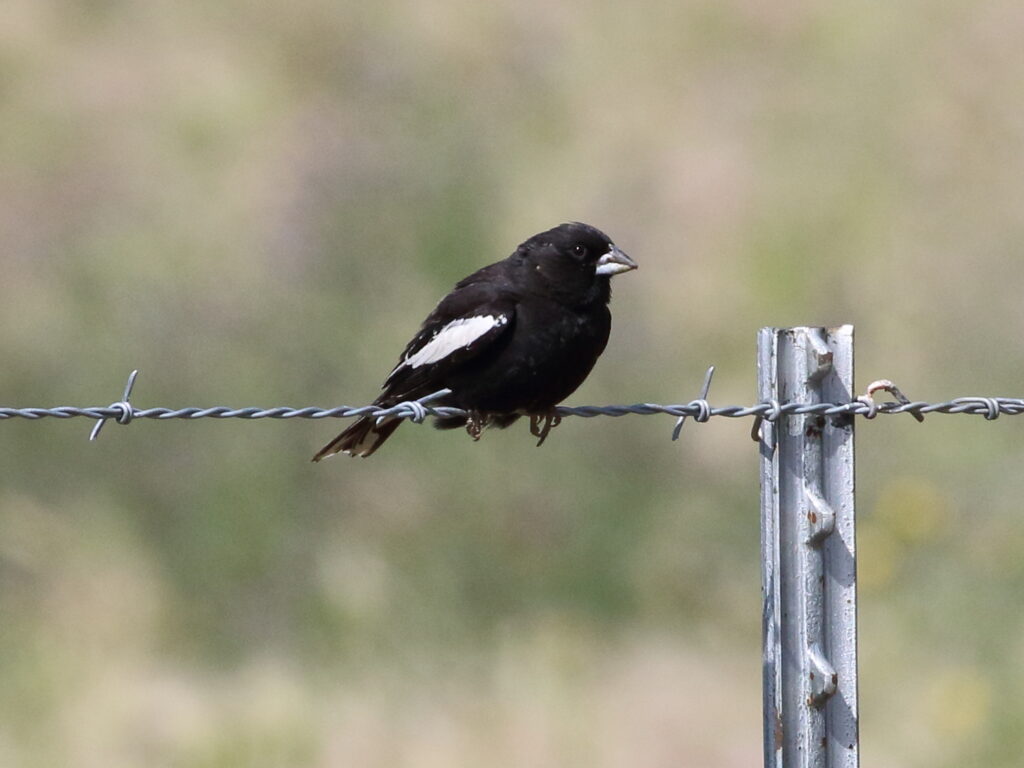
Then the scenery changed. Rather than parking next to fenced-off rangeland, the habitat on the left side of the road turned into a more natural-looking swath of native shortgrass prairie. As I got out of the car, I swore that I heard what eBird describes as the sound of “a cascading waterfall of tiny pebbles.” I’d been continuously playing the song as we’d driven between points to instill it in my head, so I couldn’t tell if what I’d heard was just my own brain playing back the song of a Sprague’s Pipit or not. Then, I heard it faintly again. As my dad grabbed his camera from the car, I set off into the prairie after the sound, flushing a pair of Ring-necked Pheasant from a bush. I climbed several ridges, watching my footsteps for rattlesnakes, until it sounded like the bird flew right above me. I looked up, and suddenly saw it—a tiny speck hovering in the blue space between the clouds, singing away.
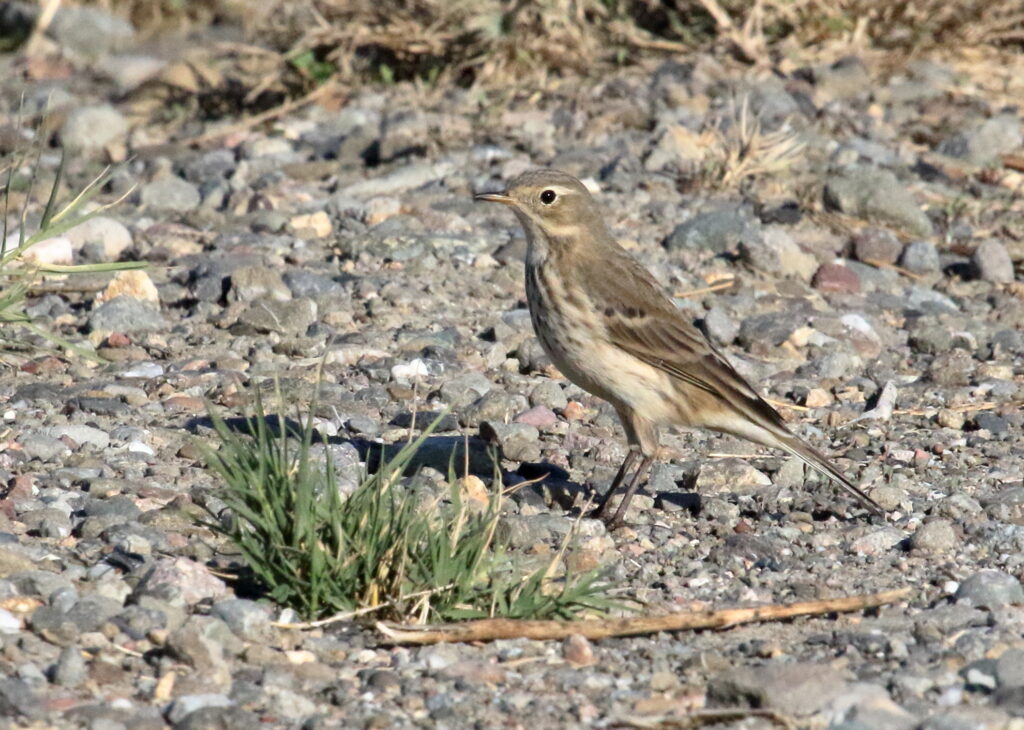
After showing it to my dad we just stood there watching what would have been the most incredibly boring part of birding for many people—but not for us. The pipit never descended, and instead slowly drifted further and further away until it was out of sight. We’d found a Sprague’s Pipit on our own! Of course, we knew that they were in the area, but locating an individual bird was still no small task!
The pipit was just the beginning of the prairie species we spotted on that road. As we kept driving, we began to pass large numbers of displaying Lark Buntings, which flew up about five feet before floating down, compared to the pipit’s display hundreds of feet above the earth. We passed a cattle grate, flushing a quintuplet of Sharp-tailed Grouse, several of which posed on the side of the road for us. Some of the Lark Buntings flashed white rumps, revealing themselves to be Bobolinks instead, which had a very similar display to the buntings, and in a very short-cut grain field I spotted three Chestnut-collared Longspurs. We’d ticked off most of Montana’s prairie birds on just this one road! Thrilled and relieved by our success, we got back on Highway 2 headed west, ready for the birds of Glacier National Park.
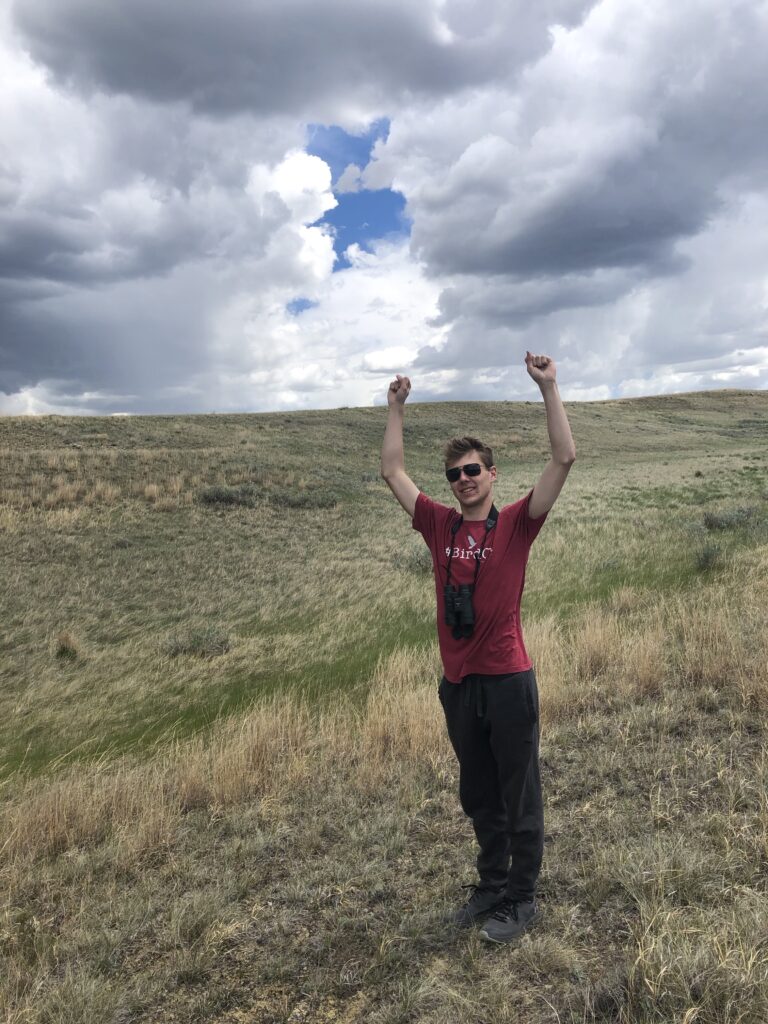

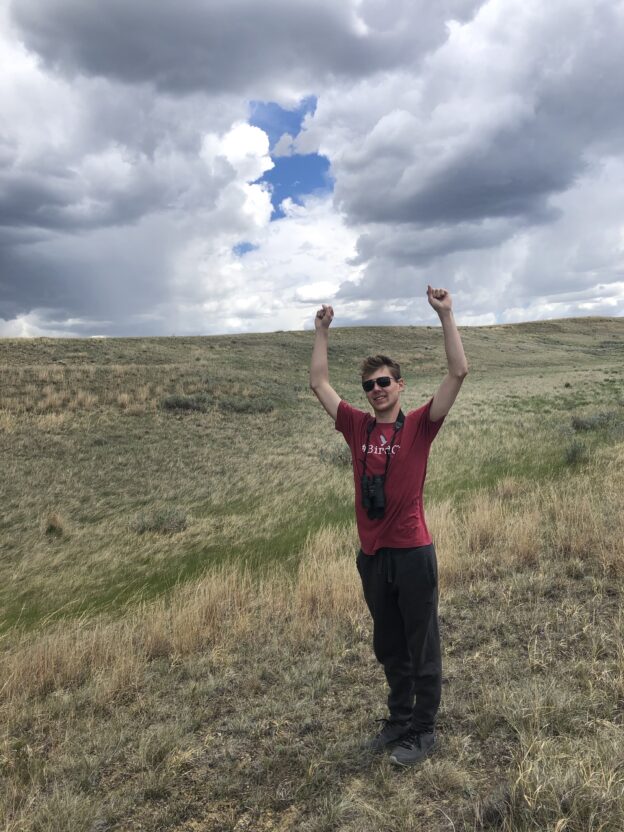
Excellent report, Braden. I felt like I was there with you guys.
OK, so gotta ask. If a Sprague’s Pipit is nearly identical to an American Pipit, and what you saw was a “tiny speck”, how do you know you saw a Sprague’s and not an American?
Congratulations on HS graduation! Now the Adventure really begins. With a great family to support you, I have no doubt you’re going to do great things.
Great question, Roger! So, quite a few things distinguish the birds. For one thing, it breeds in high, alpine areas, so it would never be found out where we were looking—at least not doing courtship displays. AMPIs are also usually found in wetter habitats and tend to be a little less drab than Sprague’s. This is a great example, though, of how helpful it is to know a bird’s habitat when it otherwise could have multiple IDs. I couldn’t easily locate info about AMPI courtship, but am guessing it’s much different than Sprague’s.
Thank you for this Pipit review. Love the pic of you, Braden. Always a wonderful read! Onward to conquer Glacier Nat’l Park. Love you my family!
Thank you, Ma! May the pipits be with you!